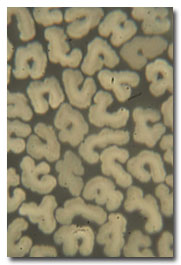The 71st Plenary Meeting of the International Cotton Advisory Committee (ICAC) is over. It took
place at the beautiful Congress Centre Kursaal Interlaken in Switzerland, October 7-12. The main
and very challenging issue — as the Rupp Report informed in different stories over the past few
weeks — was “Shaping Sustainability in the Cotton Value Chain.” As an observer, the Rupp Report was
more than pleased to see that the global cotton growing industry is realizing that it needs to take
another approach toward its global customers. And the five days’ proceedings demonstrated there is
a will to do so. Here are some first insights from this very well-organized summit of the global
cotton industry.
Upside Down In Fiber Consumption
For many decades, cotton was the undisputed leader in terms of global fiber consumption. Its
position has changed drastically since the mid-1960s, when man-made fibers started their triumphal
procession to the top. For decades, the fiber consumption ratio was 50:50 natural fibers — mainly,
cotton — to man-made fibers. Today, the consumption ratio is some 75-percent man-made to 25-percent
natural fibers. And the upward trend for man-made fibers is continuing for various reasons:
First of all, there is the growing world population. It is a fact that cotton cannot provide
enough fiber material for the whole world. Secondly, there is the development of new polymers and
fibers — such as microfibers — with improved characteristics. A third trend that is recognizable
relates to polyester. This fiber type enjoys growth rates of double digits virtually every year,
for staple fibers but mainly for filaments, thanks to the increasing industrial textiles
applications. And last, but not least, there is competition for fertile land among some of the
major crops of the world: corn, soybeans and cotton.
In times of increased environmental consciousness, and especially in so-called developed
countries, people are asking more and more for green or sustainable production. In addition to this
increased environmental consciousness, there is the modern generation of communication using social
media such as Facebook or others to generate positive or negative images. Due to this fact, big
retailers around the world have started to think about “green or sustainable products.” Many famous
labels are producing and marketing sustainable products, or claiming that their production sites
follow sustainable, sound practices. Frankly speaking, many times, after a check by a
nongovernmental or other such organization, the results are more wishful thinking than reality.
This situation has led to some devastating misunderstandings among the global customers — and a
lack of trust.
Misunderstandings
Examples from the food industry of denial or hiding of information or providing
misinformation to the customers demonstrate that it doesn’t take long to build up a bad image. And
a bad image is the last thing that cotton needs for its future. As J. Berrye Worsham, CEO of Cotton
Incorporated, said in his opening presentation: “In the future, the customer will ask you about the
background of your cotton.” Probably, this is one of the key reasons why everybody started to talk
about sustainable products. Just remember social media!
Sustainability is probably one of the key words of the past as well as the current decade.
And, more so, sustainability is a word that is subject to misunderstandings. Basically,
sustainability has to do with a constant demand for food, fuel and fibers in an environment of
limited land and resource availability. Many speakers at the ICAC conference clearly mentioned that
sustainability has nothing to do with so-called “green cotton” or whatever that may mean in this
context. It is possible to be successful with sustainable textile products even in a high-cost
country such as Switzerland. The Switcher label is making a good profit with its cotton products
that are produced even under the Global Organic Textile Standard (GOTS) specifications. The speaker
from Switcher said that his company is disclosing all audits and specifications, resulting in a
positive image and, consequently, a profitable business, which is one of the key points for
sustainable production.
Talk To One Another
It was obvious, too, that some conference attendees are afraid of polyester. To the
understanding of the Rupp Report, there is no need to be afraid. Polyester is by far not the
biggest enemy of the global cotton growers; more damaging are all the misunderstandings that fly
around the global media — such as profit is bad, textiles mean child labor, and so on. A way to the
future was demonstrated on the last day of the conference. Unfortunately, not many people attended
the session, which had a probably misleading title, “Action Steps to a Green Cotton Economy.”
Chaired by the author, the session was more about what the cotton industry can learn from other
sectors. Reinier de Man, a Netherlands-based consultant on sustainable business development,
presented an astonishing paper based on his experience with other sectors.
Seven Lessons To Learn
De Man started his presentation by saying that nobody will pay more to the taxi driver
because he has a driver’s license. Bluntly, this means that, in the long run, nobody is allowed to
operate without having sustainability. Furthermore, he mentioned that the cotton community has to
learn seven lessons for a fruitful and promising future. Key points are:
- Supply security is the driver, not product marketing.
- It is about competition for land, water, and such.
- Roundtable-based standards are the floor.
- Standards “above floor level” are needed.
- Certification and on-product labeling can (but need not) make sense.
- Leadership of single companies are a major trigger.
- Conversion needs Active Governments.
Time will tell if the message was understood. The global cotton industry needs a new
approach. The Rupp Report will come back to this important event in the next few weeks.
October 16, 2012





